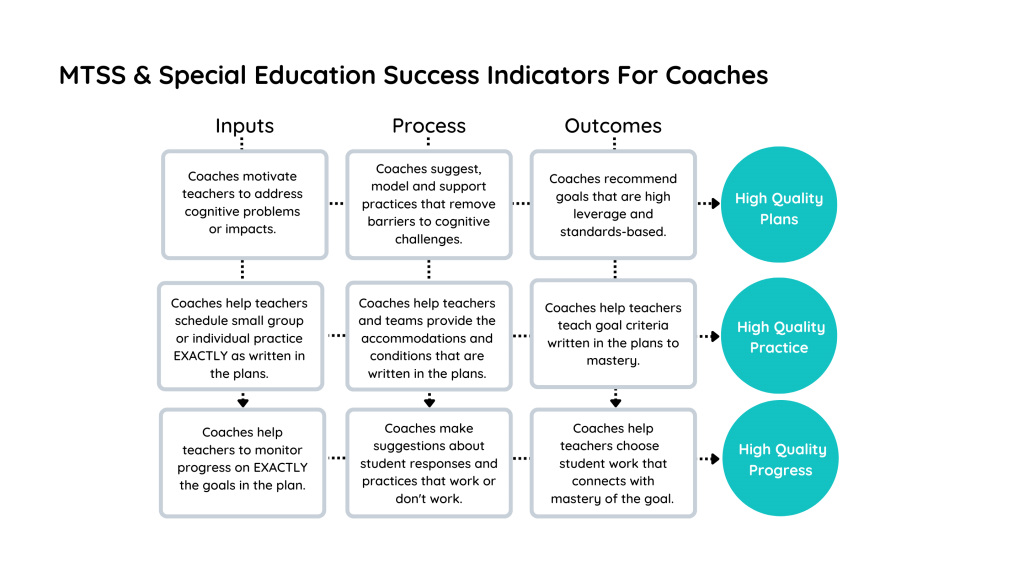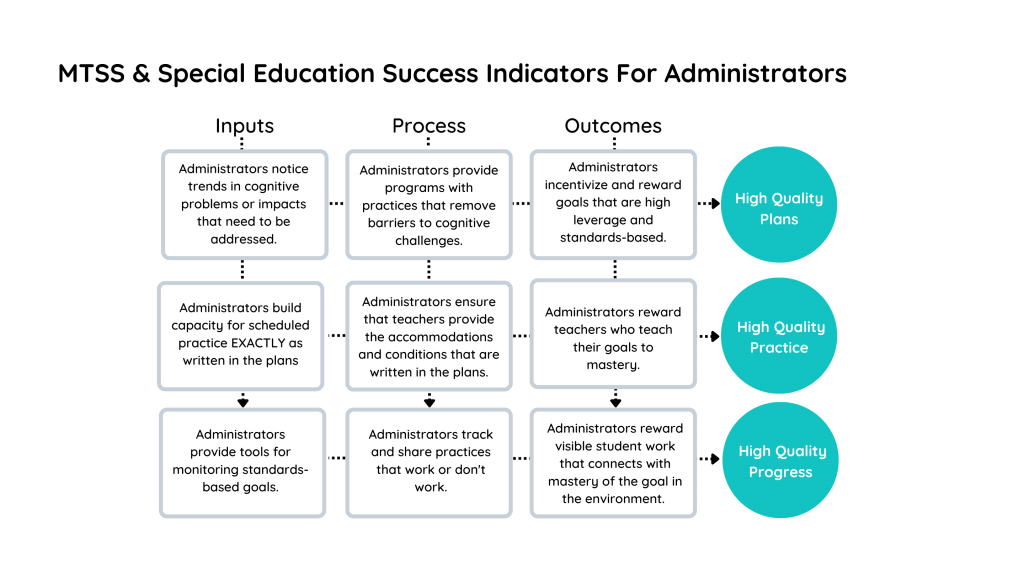As a new school year gets started, so do your goals for student achievement, program implementation, professional learning, and more. Setting high expectations isn’t enough to guarantee that those expectations will be met. How many of us set goals for ourselves every year that we fail to achieve? One way to turn expectations into success is to create success indicators.
Why Success Indicators?
A success indicator is a measurable value that represents progress towards a desired impact of a project or initiative. Creating success indicators has many benefits. Success indicators create a common language for you and your team. They help dispel confusion and conflict. Finally, they keep team members with different roles doing what they are supposed to be doing. When everybody understands the measure of success, everybody is moving in a consistent direction for a common goal.
For example, The US Department of Education’s Office of Elementary and Secondary Education promotes the use of School Quality and Student Success Indicators. Their purpose is to increase states’ capacity to implement school quality or student success (SQSS) under the Elementary and Secondary Education Act (ESEA)
Success Indicators for Whom?
It is helpful to have success indicators for all the stakeholders in your system, even your students. Write success indicators that describe required behavior for a program or initiative to meet its desired purpose. Subsequently, each team member’s role should align to the roles of the other team members. Consequently, you support the program or initiative on every level.
How to Create Success Indicators
- Determine a desired expectation.
- Identify the critical components for achieving that outcome.
- Break the critical components into steps.
- Describe success at each step.
Don’t Overthink it.
Creating success indicators is not difficult. Start with the role that makes the most sense to you. Then, build the supporting roles from there. Keep it simple. You can always change it later. Below are examples of success indicators for MTSS and special education. Our desired expectation was 100% compliance. The three critical components were high quality (compliant) plans, high quality (evidence-based) practices, and high quality (authentic) progress. Then, we broke the components into 3 steps: input, process, outcome. Finally, we described what would indicate success at each step.



Now you know how to turn expectations into success! Best to you as you plan for the upcoming school year!
Dot It is the only software in the world that makes it simple for teachers, coaches, and administrators to collaboratively plan, practice, and monitor progress for smarter MTSS and Special Education all in one place. Ready to talk solutions with people who get it? Let’s connect!






